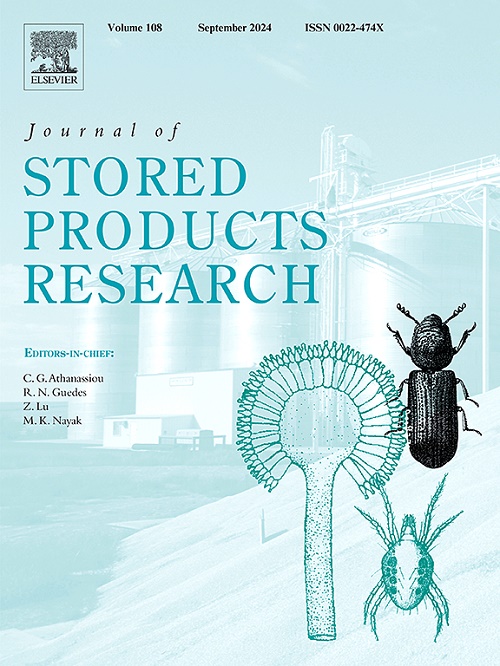Towards food security with the Grain Shield web application for stored grain pest identification
IF 2.7
2区 农林科学
Q1 ENTOMOLOGY
引用次数: 0
Abstract
As an agroeconomical country, grain storage in India is integral to the farmer's society. A significant portion of grains are lost to biotic and abiotic factors, out of which insect pests impact food security and economic stability. The preliminary step in mitigating these post-harvest losses is to identify the pest that has infested the grains. Hence, it is essential to find a solution in managing these pests to meet the nutritional demands of the burgeoning human population. In the era of digital advancement, artificial intelligence (AI) has made significant strides across various fields. This study delves into the potential of transfer learning (TL) as a tool for reducing grain losses by identifying pests infesting stored grains. Pre-trained models like VGG16, VGG19, InceptionV3, and Xception were employed and fine-tuned for pest recognition. The performance of these models was evaluated using metrics and a confusion matrix. The accuracy of the models VGG16, VGG19, InceptionV3, and Xception were 99.8%, 99.2%, 93%, and 95.8%, respectively, whereas VGG16 achieved superior performance in accuracy, precision, recall, and F1-score metrics. Confusion matrices provided insights into model strengths and weaknesses, emphasizing the importance of architecture and training data quality. Leveraging these findings, a web tool using Flask (Python) powered by VGG16 was developed to assist farmers in pest identification. This research demonstrates the potential of Transfer learning for combating post-harvest losses and promoting food security.

求助全文
约1分钟内获得全文
求助全文
来源期刊
CiteScore
5.70
自引率
18.50%
发文量
112
审稿时长
45 days
期刊介绍:
The Journal of Stored Products Research provides an international medium for the publication of both reviews and original results from laboratory and field studies on the preservation and safety of stored products, notably food stocks, covering storage-related problems from the producer through the supply chain to the consumer. Stored products are characterised by having relatively low moisture content and include raw and semi-processed foods, animal feedstuffs, and a range of other durable items, including materials such as clothing or museum artefacts.

 求助内容:
求助内容: 应助结果提醒方式:
应助结果提醒方式:


